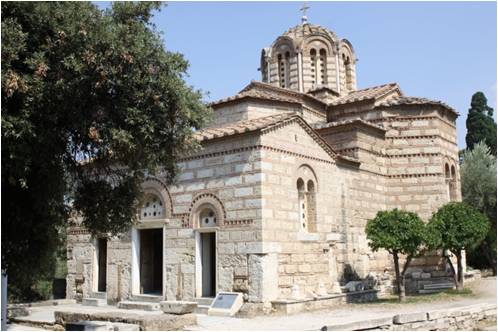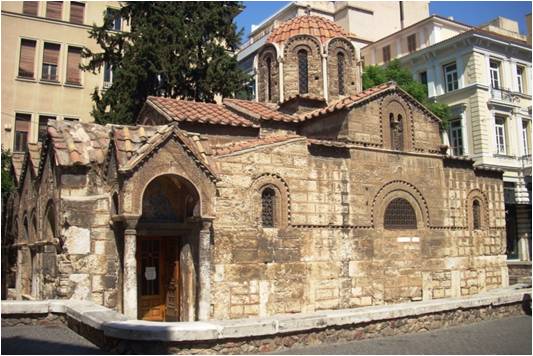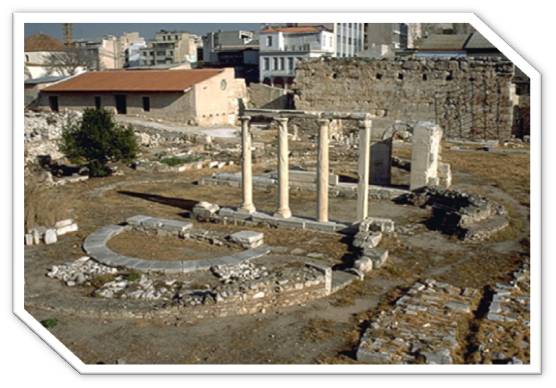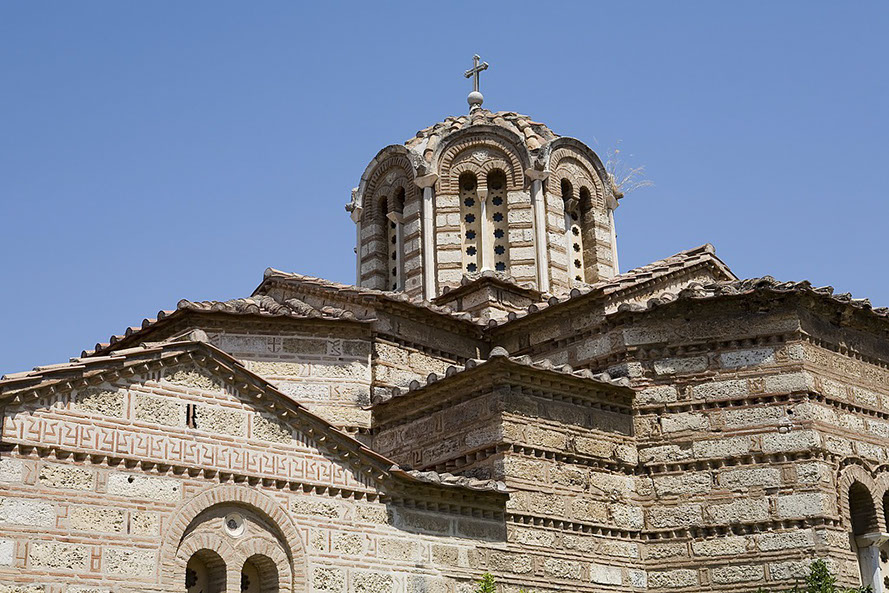Christian Building Phases
Christian Dominance
Apparently, during the 6th and 7th centuries Christianity was rising. This is demonstrated by the fact that both the Hephaistus Temple and the Parthenon (693 AD) were converted from pagan temples to churches.
Of course, it can be argued that due to the high demand for churches it was simply more practical to convert buildings than to construct them. Nevertheless, Christianity had gained a considerable foothold in this period of time, and held priority over its ancient predecessors.
The Floorplan of the Expanded Parthenon Church
https://shanhuangblog.wordpress.com/2015/03/19/reflections-on-the-parthenon-galleries/

The Byzantine Period
A Break in Building
From the 8th to the 10th century, the boom in building churches collapsed enormously. Virtually no churches were built, and there seems to have been little demand for them.
There were various reasons for this decline in building activity, and one of the most likely is economic and demographic stagnation. Another reason can be sought in the shift of displaying wealth from public to private, as the graves in this period became extremely rich.
Furthermore, an event that may have greatly influenced the economic capability of Athens was the Arab attack on the city that took place in 896 AD.
Getting Back into the Swing
During the 11th and 12th centuries, church building returned in full swing, only now the churches were much smaller than the ones built in Late Antiquity. Even so, the sheer number of churches illustrates a growing demand for places of worship.
In Byzantine times Athens flourished greatly due to the increase in trade by then, and the churches that were built in this period developed a particular Athenian style.
This is also the first period in which the Arab presence in Athens was large enough that a mosque may have been built.



The Agii Apostoli church on the Greek Agora of Athens, dated to circa 1025
(http://3.bp.blogspot.com/_nDgv2Twj21E/TKjZh7P5Y9I/AAAAAAAAGwo/-kld-BR4txw/s1600/IMG_0747.jpg)
The Kapnikarea Church
This church is dated to the twelfth century. It is an excellent example of the Athenian church style of the middle Byzantine period.
(http://commondatastorage.googleapis.com/static.panoramio.com/photos/original/40545515.jpg)
<
>
Slideshow of the Church of the Holy Apostles

.jpg?crc=178679988)
.jpg?crc=26979978)
.jpg?crc=3970246412)
.jpg?crc=91539127)
.jpg?crc=407001055)
.jpg?crc=517069902)
.jpg?crc=4074881467)
.jpg?crc=326308359)
.jpg?crc=3867556631)

60x51.jpg?crc=17858021)